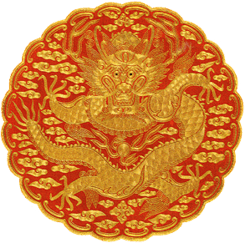Imo Incident
| Imo Incident | |
| Hangul | 임오군란 |
|---|---|
| Hanja | 壬午軍亂 |
| Revised Romanization | Imo gullan |
| McCune–Reischauer | Imo kullan |
The Imo Incident, also known as the Imo Mutiny, was a military revolt of some units of the Korean military in Seoul on July 23, 1882. "Imo" (Hangul: 임오; Hanja: 壬午) is the 19th year in the sexagenary cycle, which was traditionally used in East Asia to count years. It corresponds to the year 1882.
Background
A variety of causes for this brief disturbance have been put forward. In part, some explain the flare-up of violence by pointing to provocative policies and conduct by Japanese military advisors who had been training the new Special Skills Force since 1881.[1]
According to other sources, the revolt broke out in part because of Emperor Gojong's support for reform and modernization. The revolt was also explained in part as a reaction to Gojong's support for Japanese military advisors.[2] Some sources credit rumor as the spark which ignited violence. Some were worried by the prospect of incorporating Japanese officers in a new army structure.[3]
The disturbance is sometimes characterized as the "Imo Mutiny" (Imo kullan), and its cause is attributed to a dispute about unpaid wages.[4] It has also been called the "Soldier's riot"; and the unplanned flare-up of violence is said to have been a reaction to finding sand and bad rice in soldiers' rations.[5]
Disturbance
.jpg)
Dissatisfaction with the Korean government was the initial focus of the violence. Some government officials were killed by the rioters. Homes of high government ministers were destroyed and Changdeok Palace was occupied by soldiers. The rioting general population of Seoul swelled the ranks of the dissatisfied army units.[6]
In the midst of the chaos, the regent father of the king, the Heungseon Daewongun, took power and tried to re-establish order. He supported soldiers' complaints.[3]
The rebelling soldiers attacked the home of Min Gyeom-ho who held joint appointments of Minister of Military Affairs and the high-level official of the Agency to Bestow Blessings. They also lynched Heungin-gun, Yi Choe-Heung and attempted to murder Queen Min even reaching the Royal Palace. The poverty stricken people of Seoul from Wangsim-li and Itaewon joined in the riot and Queen Min escaped to the home of Min Eung-sik by disguising herself as a lady of the court.
The rebellion also turned on the Japanese in Joseon including Hanabusa Yoshimoto who barely escaped with the help of the British ship HMS Flying Fish.[7][8] During the day of rioting, a number of Japanese were killed, including Horimoto Reijo.[7]
Consequences
The Chinese received word about the rebellion through Li Shuchang, Chinese minister in Tokyo in Japan, on August 1 because China did not have a legation at Joseon at the time. Zhang Shu0sheng dispatched Beiyang Naval Units under the command of Ding Ruchang to Joeson with Ma Jianzhong on board to assess the status of the rebellion. The Chinese troops effectively regained control and quelled the rebellion.[2] In the aftermath of rioting, the Daewongun was accused of fomenting the disturbance and its violence,[8] and was arrested by Chinese troops.[3] He spent three years in China and returned to Korea in 1885. The Japanese government sent Ambassador Hanabusa back to Seoul with four naval warships, three cargo ships and a battalion of armed soldiers.[8]
Notes
- ↑ Tsuru, Shigeto. (2000). The Political Economy of the Environment: the Case of Japan, p. 45., p. 45, at Google Books
- 1 2 Pratt, Keith L. et al. (1999). "Imo Incident" in Korea: A Historical and Cultural Dictionary, pp. 184-185., p. 184, at Google Books
- 1 2 3 Nussbaum, Louis Frédéric et al. (2005). "Jingo-jihen" in Japan Encyclopedia, p. 422., p. 422, at Google Books
- ↑ Rhee, Syngman et al. (2001). iB8R0oEH3kEC, p. 166, at Google Books
- ↑ Kang, Jae-eun et al. (2006). The Land of Scholars: Two Thousand Years of Korean Confucianism, p. 462., p. 462, at Google Books; 임오군란 壬午軍亂, Doosan Encyclopedia
- ↑ Kang, p. 462-463., p. 462, at Google Books
- 1 2 Kang, p. 463., p. 463, at Google Books
- 1 2 3 Iwao, Seiichi. (2002). "Saimoppo jōyaku" in Dictionnaire historique du Japon, Vol. II, p. 2314., p. 2314, at Google Books
References
- Iwao, Seiichi. (2002). Dictionnaire historique du Japon (Vol. I), (Vol. II) (with Teizō Iyanaga, Susumu Ishii, Shōichirō Yoshida et al.). Paris: Maisonneuve & Larose. ISBN 978-2-7068-1632-1; OCLC 51096469
- Kang, Jae-eun and Suzanne Lee. (2006). The Land of Scholars : Two Thousand Years of Korean Confucianism. Paramus, New Jersey: Homa & Sekey Books. ISBN 978-1-931907-37-8; OCLC 60931394
- Keene, Donald (2002). Emperor of Japan: Meiji and His World, 1852–1912. New York: Columbia University Press. ISBN 0-231-12341-8.
- Kim, Jinwung (2012). A History of Korea: From "Land of the Morning Calm" to States in Conflict. New York: Indiana University Press. ISBN 0-253-00024-6.
- Nussbaum, Louis Frédéric and Käthe Roth. (2005). Japan Encyclopedia. Cambridge: Harvard University Press. ISBN 978-0-674-01753-5; OCLC 48943301
- Ono, Giichi and Hyoye Ouchi. (1922). War and Armament Expenditures of Japan. New York: Oxford university Press. OCLC 1390434
- Pratt, Keith L., Richard Rutt and James Hoare (1999). Korea: A Historical and Cultural Dictionary. London: RoutledgeCurzon. ISBN 9780700704644; ISBN 978-0-7007-0463-7; OCLC 470644847
- Rhee, Syngman and Han-Kyo Kim. (2001). The Spirit of Independence: a Primer of Korean Modernization and Reform. Honolulu: University of Hawaii Press. ISBN 9780824822644/ISBN 978-0-8248-2349-8; OCLC 237455991
- Tsuru, Shigeto (2000). The Political Economy of the Environment: the Case of Japan. Vancouver: University of British Columbia. ISBN 0-774-80763-6.
External links
- Japanese Cabinet Meeting document Oct 31, 1882 (Japanese)
- Japanese Cabinet Meeting document Nov 11, 1882 (Japanese)
